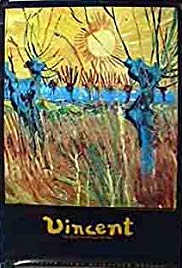Vincent van Gogh (1853 – 1890) was one of the great artists of the 19th century. He first tried to be an evangelist, but failed, and turned to painting. He was mentally unstable, at one point cutting off one of his ears. Van Gogh eventually committed suicide.
Van Gogh wanted to express how physical objects, scenes, and people made him feel. Thus, he used vivid colors and broad brush strokes to reveal form and emotion. Find a book showing van Gogh’s paintings and show them to your child or class before, during or after watching the film. There are several sites on the Internet that contain van Gogh’s paintings. See, for example, National Gallery of Art Van Gogh Virtual Tour.
Van Gogh developed many techniques to express his feelings for people or for the world. “Starry Night” is the painting of a night sky over a village in Southern France. Van Gogh used strong colors and brush strokes so thick that the paint stands out and becomes a three-dimensional addition to the painting. Van Gogh wrote to his brother “The sight of stars makes me dream.” A person looking at “Starry Night” sees the wild night sky through the eyes of the artist.
Sometimes van Gogh would apply paint right from the tube onto the canvas and then put texture into it with his brush, or he might apply paint directly to the canvas with a knife, leaving thick ridges of paint. In his pen and ink drawings, sometimes he used a series of small marks to show us the movement of his subject. An example is the pen-transfer lithograph entitled, “In the Orchard.”
Van Gogh has been classified by art historians as a “Post-Impressionist.” The Impressionists tried to depict scenes naturalistically. The Post-Impressionists painted subjectively, communicating how the scene made them feel. Other Post-Impressionist artists were Paul Cezanne, Paul Gauguin, Henri de Toulouse-Lautrec (see Moulin Rouge) and Georges Seurat.
Van Gogh sold exactly one painting while he was alive and lived off the charity of his brother. His paintings now sell for millions.
Vincent’s brother Theo, an art dealer living in Paris, supported Vincent throughout his life. While the van Goghs were Dutch, the center of the art world in the late 19th century was Paris. Theo was the manager of a gallery there. Vincent went to Paris and met many of the famous artists of the day.
When van Gogh was living in the South of France another of the great artists of the period, Paul Gauguin, came to live with him for a time. This arrangement ended in discord and disaster and was the occasion for van Gogh’s mutilation of his ear. See Lust for Life.


